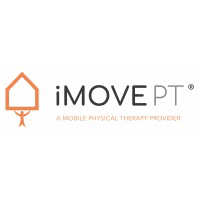
IMove PT
How much does IMove PT cost?
Initial Investment Range
$40,100 to $244,500
Franchise Fee
$30,000 to $37,500
A physical therapy business that provides state-of-the-art physical therapy services either as a mobile business to patients in their homes, workplaces, or other similar settings, or as a traditional business offering the services at a set brick and mortar location, with all of the services provided by a licensed physical therapist.
Enjoy our partial free risk analysis below
Unlock the full risk analysis to access 9 more categories covering 100+ risks.
IMove PT April 22, 2025 FDD Risk Analysis
Free FDD Library AI Analysis Date: August 22, 2025
DISCLAIMER: Not Legal Advice - For Informational Purposes Only. Consult With Qualified Franchise Professionals.
Franchisor Stability Risks
Start HereDisclosure of Franchisor's Financial Instability
High Risk
Explanation
The franchisor explicitly warns that its financial condition calls its ability to provide support into question. Financial statements show a history of operating losses and negative net worth. The state of Illinois even required the franchisor to defer collecting initial franchise fees due to its financial condition. This historical instability could impact its ability to support your business, invest in the brand, and fulfill its obligations, despite recent profitability improvements.
Potential Mitigations
- Your accountant must conduct a thorough review of the franchisor's audited financial statements, including all footnotes and historical trends.
- Discuss the specific warning regarding financial condition with the franchisor and assess their current financial health with your financial advisor.
- A franchise attorney should explain the implications of any state-imposed conditions, such as the fee deferral required by Illinois.
High Franchisee Turnover
Low Risk
Explanation
The risk of high franchisee turnover was not identified. iMove PT, LLC is a very new franchise system, having started franchising in 2022, and has not yet experienced any franchisee terminations, non-renewals, or cessations of operation according to Item 20 data. High turnover is a critical red flag in established systems, often indicating franchisee dissatisfaction or lack of profitability, so this data should be monitored in future FDDs.
Potential Mitigations
- As the system grows, your business advisor can help you monitor franchisee turnover rates in future FDDs.
- Before investing, it is always wise to have your attorney help you formulate questions for current franchisees about their satisfaction and profitability.
- An accountant can help you analyze the Item 20 tables in future years to calculate the real turnover rate.
Rapid System Growth
Low Risk
Explanation
The risk of excessively rapid growth was not identified. The franchisor has grown from zero to five franchised units over a three-year period, which suggests a controlled and measured expansion pace. This pace should allow the franchisor to maintain adequate support infrastructure for its franchisees. Rapid growth in other systems can sometimes strain a franchisor's ability to provide quality training and support, so this controlled growth is a positive sign.
Potential Mitigations
- A business advisor can help you assess if the franchisor's support systems are scalable for future growth.
- When speaking with current franchisees, you should ask about the quality and responsiveness of the franchisor's support.
- Your attorney can review the franchisor's contractual support obligations to ensure they are clearly defined.
New/Unproven Franchise System
High Risk
Explanation
This is a new and unproven franchise system, a fact the franchisor explicitly discloses as a special risk. The company was formed in 2020 and began franchising in 2022, with only five franchised units operating at the end of 2024. This limited history means the business model's long-term viability and the franchisor's ability to provide sustained support are not yet fully proven, presenting a higher level of risk than an established system.
Potential Mitigations
- A franchise attorney should be consulted to potentially negotiate more franchisee-favorable terms to offset the higher risk of a new system.
- Engage a business advisor to conduct extra due diligence on the business model and the market.
- An accountant should carefully vet the franchisor's capitalization and your own financial projections for this unproven system.
Possible Fad Business
Low Risk
Explanation
This risk was not identified. The franchise operates in the physical therapy sector, a well-established and integral part of the healthcare industry with long-term demand driven by demographics, sports injuries, and rehabilitation needs. The business model is not based on a short-term trend or fad. It is still important to assess local competition, but the underlying service is not a fad.
Potential Mitigations
- A business advisor can help you research the long-term sustainability and competitive landscape of the physical therapy market in your area.
- Your accountant can help you model the financial impact of potential shifts in healthcare reimbursement and consumer demand.
- Discuss the franchisor's plans for innovation and adaptation with them to understand their long-term vision.
Inexperienced Management
High Risk
Explanation
While the founder has extensive experience operating physical therapy clinics, the franchisor entity has very limited experience managing a franchise system, having only begun in 2022. A lack of deep franchising experience can pose risks related to the development of support systems, training programs, and marketing funds that effectively serve a network of independent owners. The franchisor's ability to scale support is unproven.
Potential Mitigations
- Speaking with the initial group of franchisees is critical to gauge the quality of support from the new franchise management team.
- A franchise attorney can help you scrutinize the contractual obligations for support and training in the Franchise Agreement.
- It is wise to have a business advisor help you assess whether the management team has hired experienced franchise professionals to assist them.
Private Equity Ownership
Low Risk
Explanation
This risk is not present in the FDD. Item 1 indicates the franchisor is iMove PT, LLC (iMove PT), and Item 2 identifies the founder, Michael Gorman, as the manager. There is no disclosure of ownership by a private equity firm. Private equity ownership can sometimes introduce a focus on short-term returns over the long-term health of franchisees, so its absence can be seen as a neutral or positive factor.
Potential Mitigations
- Your attorney can verify the corporate ownership structure to confirm the absence of undisclosed controlling parties like PE firms.
- When analyzing the Franchise Agreement, your attorney should review the assignment clause to understand what happens if the franchisor is sold in the future.
- Discuss the long-term vision for the company with the founder to understand their commitment.
Non-Disclosure of Parent Company
Low Risk
Explanation
This risk was not identified. The franchisor discloses in Item 1 that it does not have a parent company. The FDD presents iMove PT as a standalone entity. Therefore, the risk of unassessed financial instability or control from an undisclosed parent company does not appear to be a factor in this franchise offering.
Potential Mitigations
- A franchise attorney can help you confirm the company's structure and the absence of any undisclosed parent entities.
- Your accountant should review the franchisor's financials to assess its standalone viability without the backing of a parent company.
- In discussions with the franchisor, you can confirm their corporate structure and that no parent entity guarantees their performance.
Predecessor History Issues
Low Risk
Explanation
The risk of issues from a predecessor entity was not identified. Item 1 of the FDD states that the franchisor has no predecessors. This means the business history presented is that of the current entity, and there are no past corporate histories involving bankruptcy, litigation, or high franchisee turnover from a prior version of the franchisor that you need to be concerned about.
Potential Mitigations
- Your attorney should confirm the 'no predecessor' statement in Item 1 as part of their review.
- A business advisor can help you perform public record searches to ensure no prior, similarly named entities run by the same management have a troubled history.
- When speaking with the franchisor, you can ask about the full history of the brand prior to the formation of the current company.
Pattern of Litigation
Low Risk
Explanation
This risk was not identified. Item 3 of the FDD discloses no history of litigation involving the franchisor, its predecessors, or its management that would be material to a prospective franchisee. The absence of litigation, especially claims of fraud or breach of contract from other franchisees, is a positive indicator. A pattern of such litigation in other systems can signal significant underlying problems.
Potential Mitigations
- Your attorney should confirm the 'no litigation' disclosure in Item 3.
- Speaking with current and former franchisees can help verify if there have been any significant disputes that did not rise to the level of disclosed litigation.
- A business advisor can assist you in searching public records for any litigation that may not have been disclosed.
Disclosure & Representation Risks
Example Risk: Franchisee Financial Obligations
Blue Risk
Explanation
This risk involves the financial obligations that a franchisee must meet, including initial fees, ongoing royalties, and other required payments. Understanding these obligations is crucial for long-term success.
Potential Mitigations
- Carefully review the Franchise Disclosure Document (FDD) and consult with a franchise attorney to fully understand all financial commitments before signing.
- Conduct regular risk assessments
- Implement monitoring and reporting systems
Unlock Full Risk Analysis
Purchase the complete risk review to see all 102 risks across all 10 categories.
Financial & Fee Risks
Example Risk: Franchisee Financial Obligations
Blue Risk
Explanation
This risk involves the financial obligations that a franchisee must meet, including initial fees, ongoing royalties, and other required payments. Understanding these obligations is crucial for long-term success.
Potential Mitigations
- Carefully review the Franchise Disclosure Document (FDD) and consult with a franchise attorney to fully understand all financial commitments before signing.
- Conduct regular risk assessments
- Implement monitoring and reporting systems
Unlock Full Risk Analysis
Purchase the complete risk review to see all 102 risks across all 10 categories.
Legal & Contract Risks
Example Risk: Franchisee Financial Obligations
Blue Risk
Explanation
This risk involves the financial obligations that a franchisee must meet, including initial fees, ongoing royalties, and other required payments. Understanding these obligations is crucial for long-term success.
Potential Mitigations
- Carefully review the Franchise Disclosure Document (FDD) and consult with a franchise attorney to fully understand all financial commitments before signing.
- Conduct regular risk assessments
- Implement monitoring and reporting systems
Unlock Full Risk Analysis
Purchase the complete risk review to see all 102 risks across all 10 categories.
Territory & Competition Risks
Example Risk: Franchisee Financial Obligations
Blue Risk
Explanation
This risk involves the financial obligations that a franchisee must meet, including initial fees, ongoing royalties, and other required payments. Understanding these obligations is crucial for long-term success.
Potential Mitigations
- Carefully review the Franchise Disclosure Document (FDD) and consult with a franchise attorney to fully understand all financial commitments before signing.
- Conduct regular risk assessments
- Implement monitoring and reporting systems
Unlock Full Risk Analysis
Purchase the complete risk review to see all 102 risks across all 10 categories.
Regulatory & Compliance Risks
Example Risk: Franchisee Financial Obligations
Blue Risk
Explanation
This risk involves the financial obligations that a franchisee must meet, including initial fees, ongoing royalties, and other required payments. Understanding these obligations is crucial for long-term success.
Potential Mitigations
- Carefully review the Franchise Disclosure Document (FDD) and consult with a franchise attorney to fully understand all financial commitments before signing.
- Conduct regular risk assessments
- Implement monitoring and reporting systems
Unlock Full Risk Analysis
Purchase the complete risk review to see all 102 risks across all 10 categories.
Franchisor Support Risks
Example Risk: Franchisee Financial Obligations
Blue Risk
Explanation
This risk involves the financial obligations that a franchisee must meet, including initial fees, ongoing royalties, and other required payments. Understanding these obligations is crucial for long-term success.
Potential Mitigations
- Carefully review the Franchise Disclosure Document (FDD) and consult with a franchise attorney to fully understand all financial commitments before signing.
- Conduct regular risk assessments
- Implement monitoring and reporting systems
Unlock Full Risk Analysis
Purchase the complete risk review to see all 102 risks across all 10 categories.
Operational Control Risks
Example Risk: Franchisee Financial Obligations
Blue Risk
Explanation
This risk involves the financial obligations that a franchisee must meet, including initial fees, ongoing royalties, and other required payments. Understanding these obligations is crucial for long-term success.
Potential Mitigations
- Carefully review the Franchise Disclosure Document (FDD) and consult with a franchise attorney to fully understand all financial commitments before signing.
- Conduct regular risk assessments
- Implement monitoring and reporting systems
Unlock Full Risk Analysis
Purchase the complete risk review to see all 102 risks across all 10 categories.
Term & Exit Risks
Example Risk: Franchisee Financial Obligations
Blue Risk
Explanation
This risk involves the financial obligations that a franchisee must meet, including initial fees, ongoing royalties, and other required payments. Understanding these obligations is crucial for long-term success.
Potential Mitigations
- Carefully review the Franchise Disclosure Document (FDD) and consult with a franchise attorney to fully understand all financial commitments before signing.
- Conduct regular risk assessments
- Implement monitoring and reporting systems
Unlock Full Risk Analysis
Purchase the complete risk review to see all 102 risks across all 10 categories.
Miscellaneous Risks
Example Risk: Franchisee Financial Obligations
Blue Risk
Explanation
This risk involves the financial obligations that a franchisee must meet, including initial fees, ongoing royalties, and other required payments. Understanding these obligations is crucial for long-term success.
Potential Mitigations
- Carefully review the Franchise Disclosure Document (FDD) and consult with a franchise attorney to fully understand all financial commitments before signing.
- Conduct regular risk assessments
- Implement monitoring and reporting systems
Unlock Full Risk Analysis
Purchase the complete risk review to see all 102 risks across all 10 categories.











